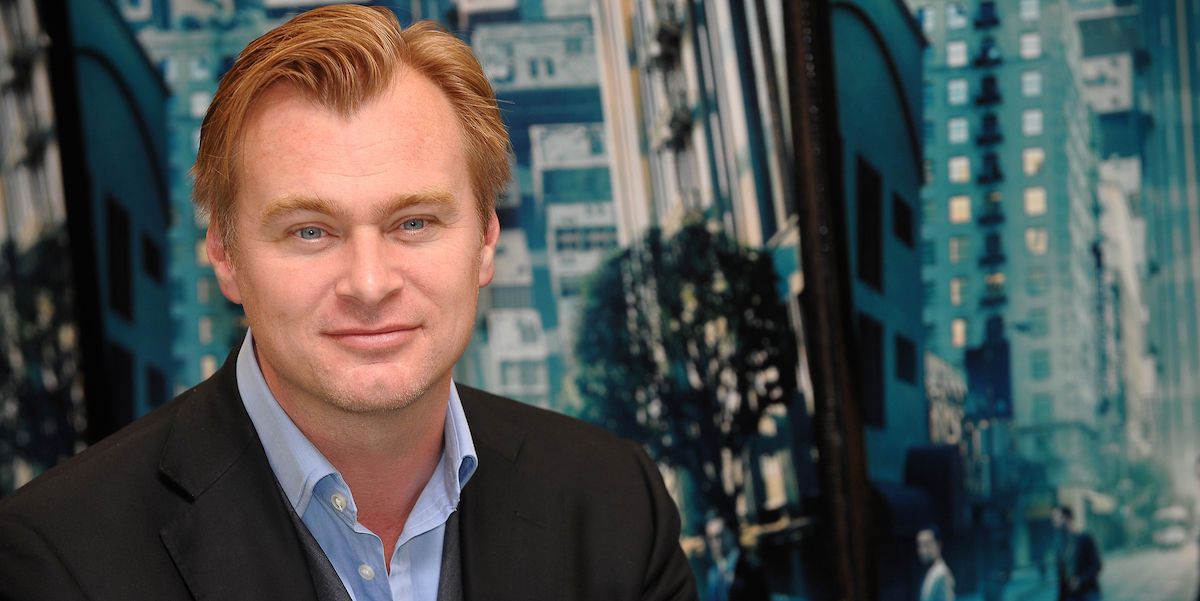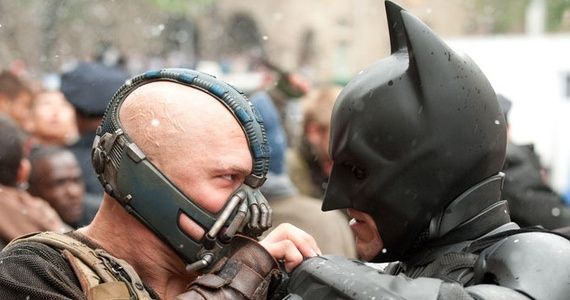Christopher Nolan is the epitome of being a stickler when it comes to the filmmaking process. His insight into filmmaking is a touchstone for many aspiring directors (and movie enthusiasts).
The Dark Knight Rises is just a few months away from release and the director took the time speak to the people of the DGA about why he prefers to shoot in IMAX, the balance of practical effects versus CGI in his movies, and why he doesn't shoot films in 3D.
Today, most filmmakers shoot their movies digitally - as opposed to actual film stock - but Nolan is a proponent of using the traditional method of shooting. Here is what he had to say about the change:
"For the last 10 years, I've felt increasing pressure to stop shooting film and start shooting video, but I've never understood why. It's cheaper to work on film, it's far better looking, it’s the technology that's been known and understood for a hundred years, and it's extremely reliable. I think, truthfully, it boils down to the economic interest of manufacturers and [a production] industry that makes more money through change rather than through maintaining the status quo. We save a lot of money shooting on film and projecting film and not doing digital intermediates. In fact, I've never done a digital intermediate. Photochemically, you can time film with a good timer in three or four passes, which takes about 12 to 14 hours as opposed to seven or eight weeks in a DI suite. That’s the way everyone was doing it 10 years ago, and I've just carried on making films in the way that works best and waiting until there’s a good reason to change. But I haven't seen that reason yet."
It should be noted that the reason why Nolan didn't shoot Inception in IMAX is because he was "trying to portray the reality of dreams rather than their extraordinary nature - so we used a handheld camera and shot it in a more spontaneous way." Nolan wasn’t afraid to hold back in the interview and candidly spoke about the real dangers of film disappearing. Voicing his opinions on the matter, he brought a collection of filmmakers together to address how traditional film stock can be saved, but also how digital films can be used as well:
“I’ve kept my mouth shut about this for a long time and it’s fine that everyone has a choice, but for me the choice is in real danger of disappearing. So right before Christmas I brought some filmmakers together and showed them the prologue for The Dark Knight Rises that we shot on IMAX film, then cut from the original negative and printed. I wanted to give them a chance to see the potential, because I think IMAX is the best film format that was ever invented. It’s the gold standard and what any other technology has to match up to, but none have, in my opinion. The message I wanted to put out there was that no one is taking anyone’s digital cameras away. But if we want film to continue as an option, and someone is working on a big studio movie with the resources and the power to insist [on] film, they should say so. I felt as if I didn’t say anything, and then we started to lose that option, it would be a shame. When I look at a digitally acquired and projected image, it looks inferior against an original negative anamorphic print or an IMAX one.”
If a remarkable filmmaker like Nolan has something to say, its probably best to listen - and when it comes to the state of film making, then he deserves undivided attention. The fact that he wants to keep the spirit of traditional shooting alive says a lot about the director, but it also addresses the state of the industry itself. As a result, its encouraging that he wants to keep that tradition alive.
Nolan admits that he uses CGI in his films, but he uses it to tell the story instead of making it a large-scale visual spectacle. He believes that there is a fine line between how a movie uses CGI, and that he has no interest in making the big-budget blockbusters. Here's what he had to say:
"The thing with computer-generated imagery is that it’s an incredibly powerful tool for making better visual effects. But I believe in an absolute difference between animation and photography. However sophisticated your computer-generated imagery is, if it’s been created from no physical elements and you haven’t shot anything, it’s going to feel like animation. There are usually two different goals in a visual effects movie. One is to fool the audience into seeing something seamless, and that’s how I try to use it. The other is to impress the audience with the amount of money spent on the spectacle of the visual effect, and that, I have no interest in. We try to enhance our stunt work and floor effects with extraordinary CGI tools like wire and rig removals. If you put a lot of time and effort into matching your original film elements, the kind of enhancements you can put into the frames can really trick the eye, offering results far beyond what was possible 20 years ago. The problem for me is if you don’t first shoot something with the camera on which to base the shot, the visual effect is going to stick out if the film you’re making has a realistic style or patina. I prefer films that feel more like real life, so any CGI has to be very carefully handled to fit into that."
CGI is a relevant tool in film today and allows the impossible to become possible on screen. But there comes a time where a production can be over-saturated - diluting the value of the film itself. CGI does not age well - at all - and the older a CGI-heavy film gets, the more the CGI sticks out. Basically Nolan says he does not shoot movies just for the visual effects, but to tell the stories, and only uses CGI whenever its necessary. Which is a huge reason why his films - no matter what its about - seems so much more grounded in reality than other films.
Finally, Nolan addressed his opinions on 3D. And as you can imagine, he isn’t a big fan of it:
"Warner Bros. would have been very happy, but I said to the guys there that I wanted it to be stylistically consistent with the first two films and we were really going to push the IMAX thing to create a very high-quality image. I find stereoscopic imaging too small scale and intimate in its effect. 3-D is a misnomer. Films are 3-D. The whole point of photography is that it’s three-dimensional. The thing with stereoscopic imaging is it gives each audience member an individual perspective. It’s well suited to video games and other immersive technologies, but if you're looking for an audience experience, stereoscopic is hard to embrace. I prefer the big canvas, looking up at an enormous screen and at an image that feels larger than life. When you treat that stereoscopically, and we've tried a lot of tests, you shrink the size so the image becomes a much smaller window in front of you. So the effect of it, and the relationship of the image to the audience, has to be very carefully considered. And I feel that in the initial wave to embrace it, that wasn’t considered in the slightest."
It's not surprising that Warner Bros. would have loved to have Nolan shoot the film in 3D. But considering that the director is a staunch traditionalist, its hard to imagine Nolan implementing 3D affects into his films. For me, 3D adds little to no value to the film and is more of a headache and a gimmick than anything else. I can understand its appeal, but like Nolan, I prefer a film presented in IMAX. Unfortunately, some films presented in IMAX are digitally altered to fit the IMAX screen. Hopefully with the success of films like The Dark Knight and Mission: Impossible Ghost Protocol, directors will use the IMAX cameras instead of digitally altering their features to fit IMAX screens. It isn't a cheap process, but the positive certainly outweigh the negatives.
The full interview can be found at DGA.org. Not only does Nolan point out the state of film making today, he also talks about some of his favorite films and film genres.
The Dark Knight Rises hits theaters on July 18th, 2012.
Source: DGA.org


